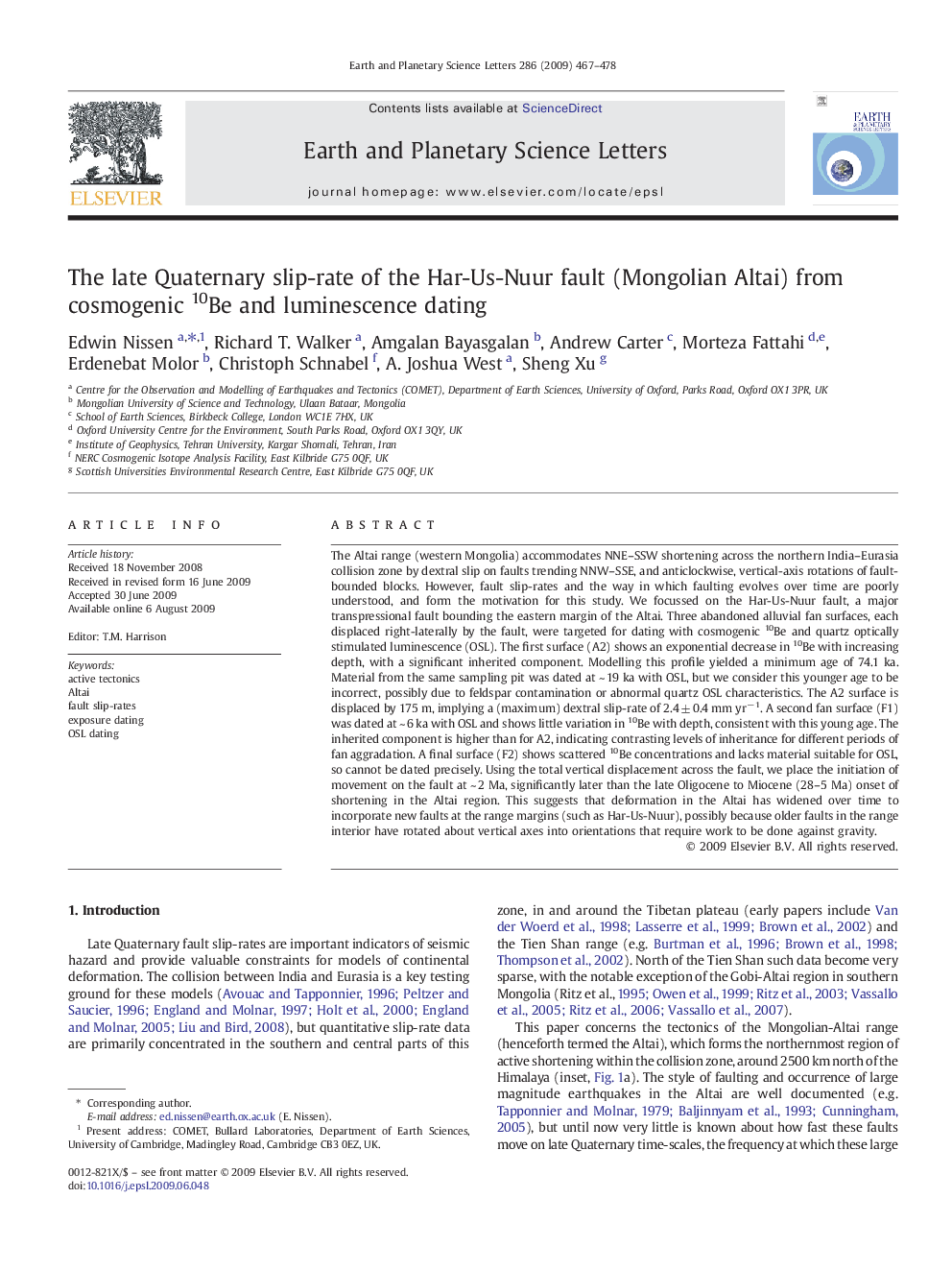| کد مقاله | کد نشریه | سال انتشار | مقاله انگلیسی | نسخه تمام متن |
|---|---|---|---|---|
| 4679125 | 1634866 | 2009 | 12 صفحه PDF | دانلود رایگان |
عنوان انگلیسی مقاله ISI
The late Quaternary slip-rate of the Har-Us-Nuur fault (Mongolian Altai) from cosmogenic 10Be and luminescence dating
دانلود مقاله + سفارش ترجمه
دانلود مقاله ISI انگلیسی
رایگان برای ایرانیان
کلمات کلیدی
موضوعات مرتبط
مهندسی و علوم پایه
علوم زمین و سیارات
علوم زمین و سیاره ای (عمومی)
پیش نمایش صفحه اول مقاله

چکیده انگلیسی
The Altai range (western Mongolia) accommodates NNE-SSW shortening across the northern India-Eurasia collision zone by dextral slip on faults trending NNW-SSE, and anticlockwise, vertical-axis rotations of fault-bounded blocks. However, fault slip-rates and the way in which faulting evolves over time are poorly understood, and form the motivation for this study. We focussed on the Har-Us-Nuur fault, a major transpressional fault bounding the eastern margin of the Altai. Three abandoned alluvial fan surfaces, each displaced right-laterally by the fault, were targeted for dating with cosmogenic 10Be and quartz optically stimulated luminescence (OSL). The first surface (A2) shows an exponential decrease in 10Be with increasing depth, with a significant inherited component. Modelling this profile yielded a minimum age of 74.1 ka. Material from the same sampling pit was dated at ~ 19 ka with OSL, but we consider this younger age to be incorrect, possibly due to feldspar contamination or abnormal quartz OSL characteristics. The A2 surface is displaced by 175 m, implying a (maximum) dextral slip-rate of 2.4 ± 0.4 mm yrâ 1. A second fan surface (F1) was dated at ~ 6 ka with OSL and shows little variation in 10Be with depth, consistent with this young age. The inherited component is higher than for A2, indicating contrasting levels of inheritance for different periods of fan aggradation. A final surface (F2) shows scattered 10Be concentrations and lacks material suitable for OSL, so cannot be dated precisely. Using the total vertical displacement across the fault, we place the initiation of movement on the fault at ~ 2 Ma, significantly later than the late Oligocene to Miocene (28-5 Ma) onset of shortening in the Altai region. This suggests that deformation in the Altai has widened over time to incorporate new faults at the range margins (such as Har-Us-Nuur), possibly because older faults in the range interior have rotated about vertical axes into orientations that require work to be done against gravity.
ناشر
Database: Elsevier - ScienceDirect (ساینس دایرکت)
Journal: Earth and Planetary Science Letters - Volume 286, Issues 3â4, 15 September 2009, Pages 467-478
Journal: Earth and Planetary Science Letters - Volume 286, Issues 3â4, 15 September 2009, Pages 467-478
نویسندگان
Edwin Nissen, Richard T. Walker, Amgalan Bayasgalan, Andrew Carter, Morteza Fattahi, Erdenebat Molor, Christoph Schnabel, A. Joshua West, Sheng Xu,